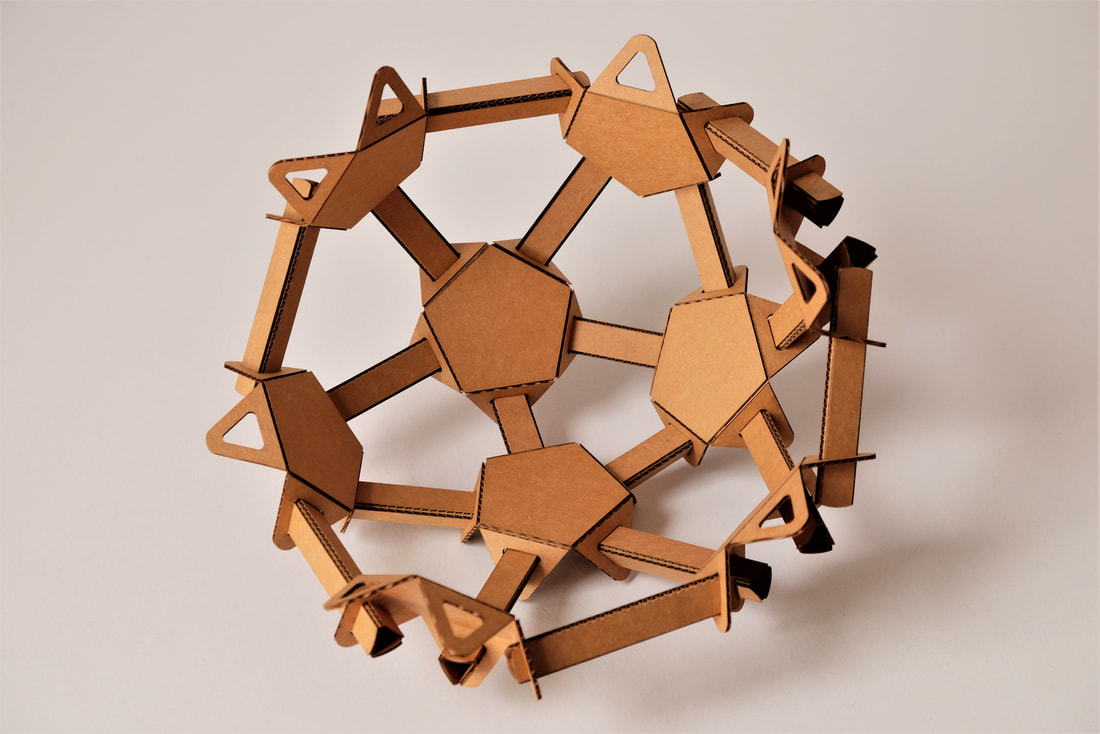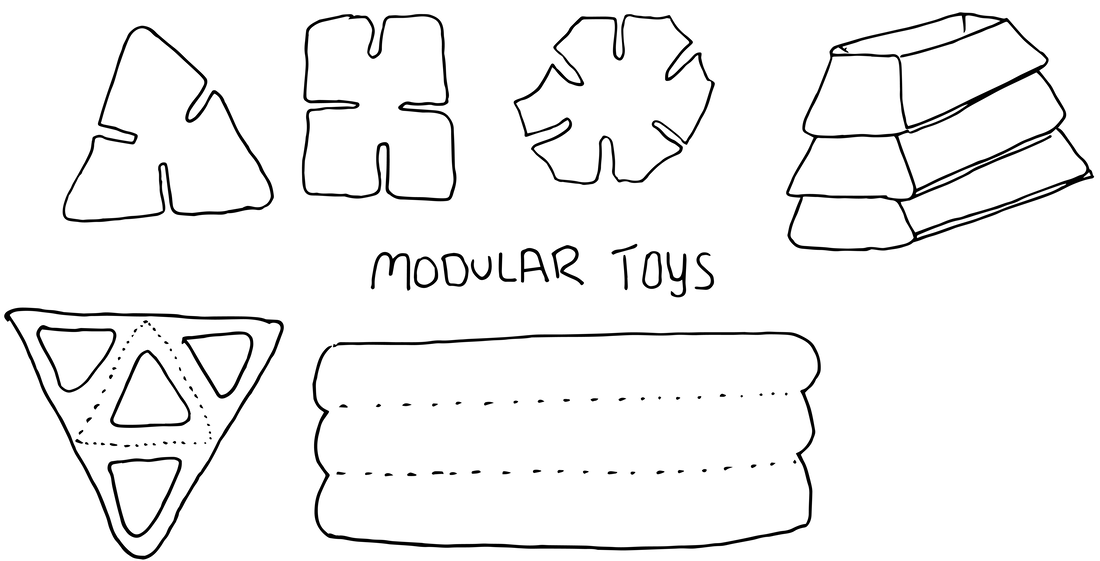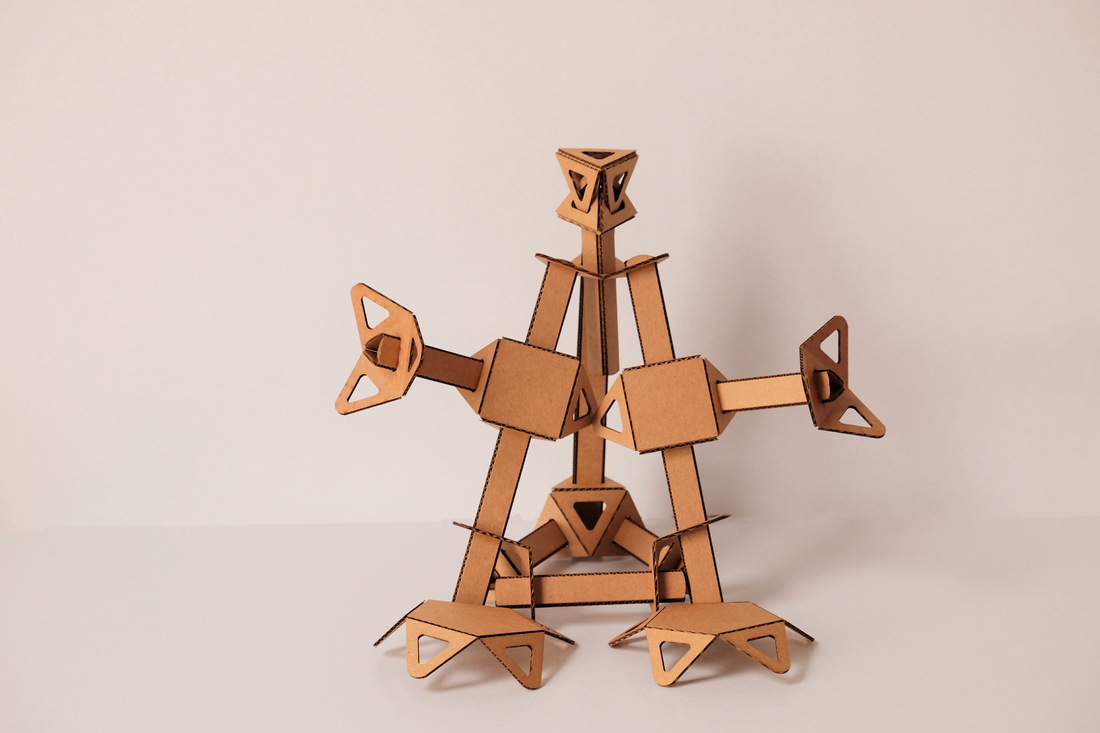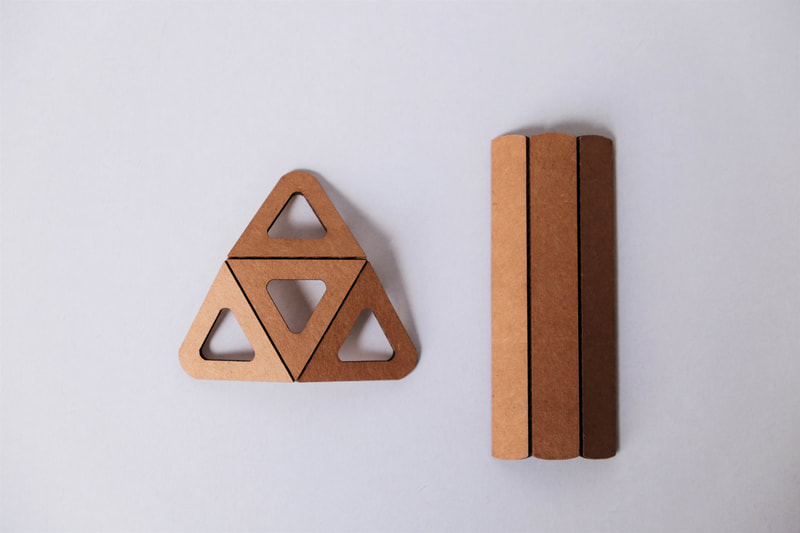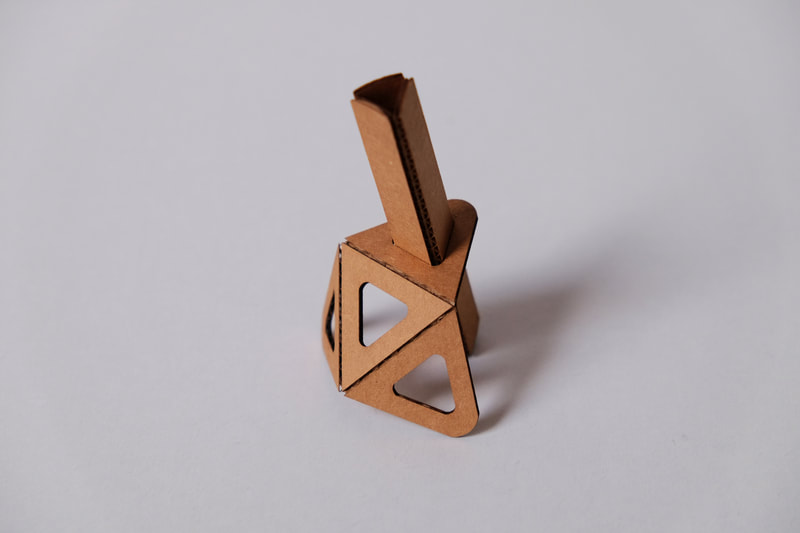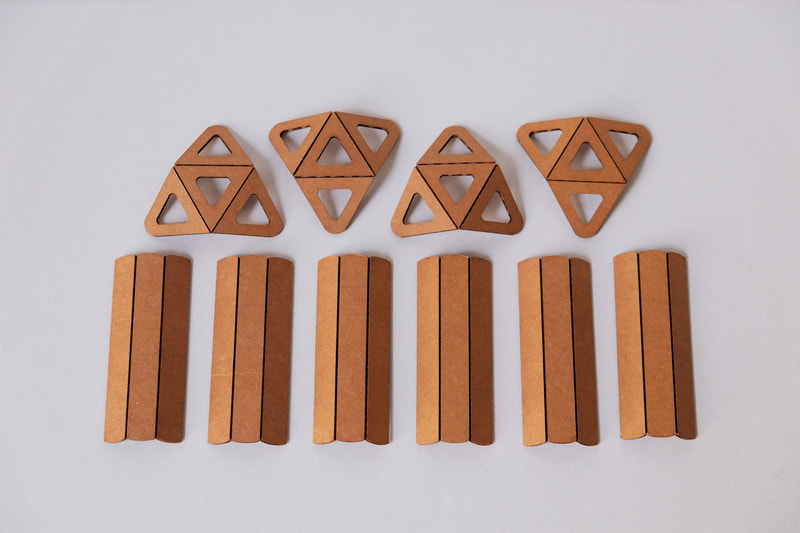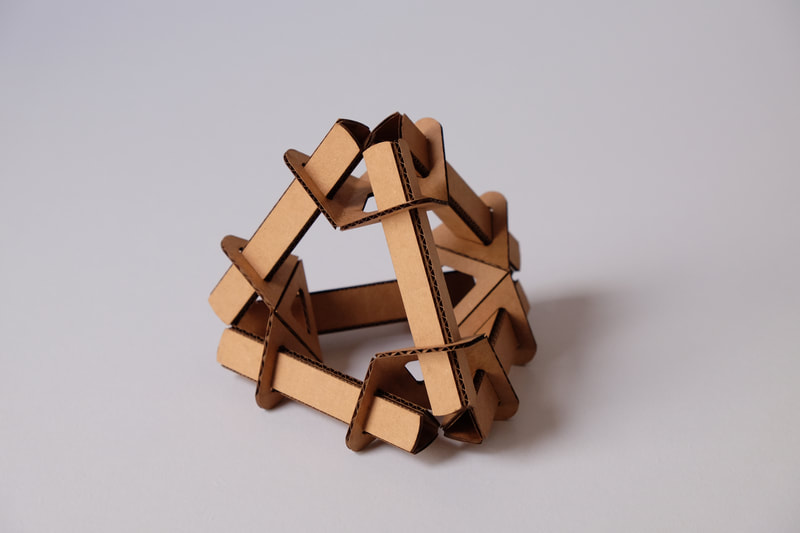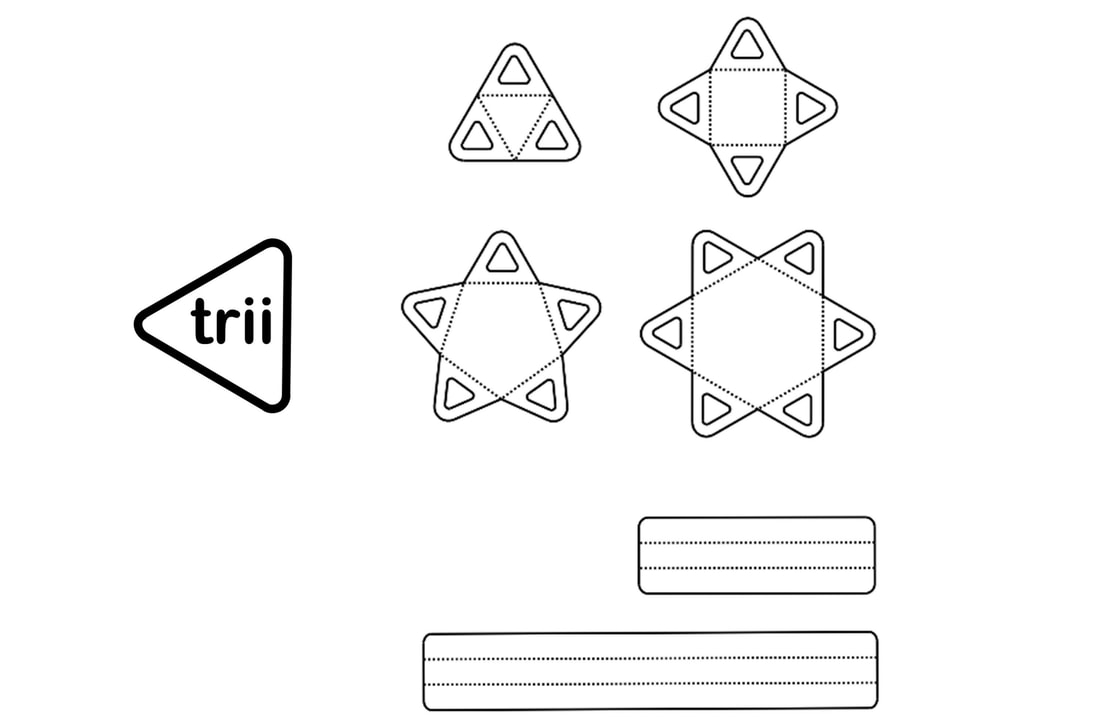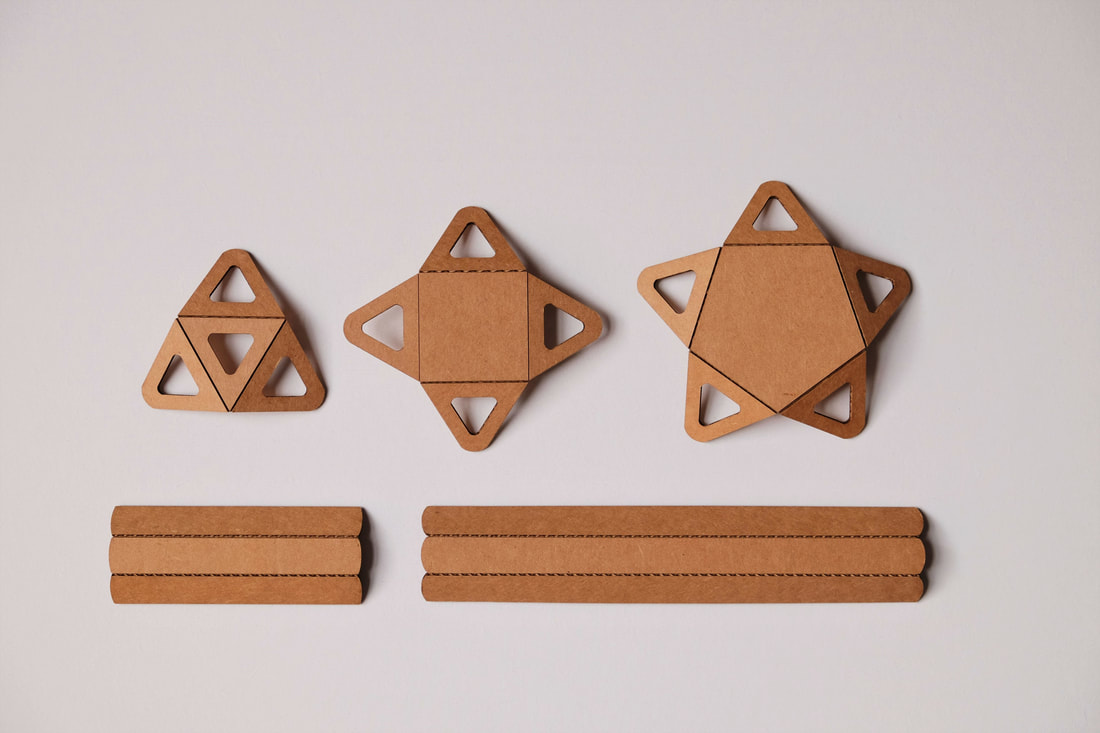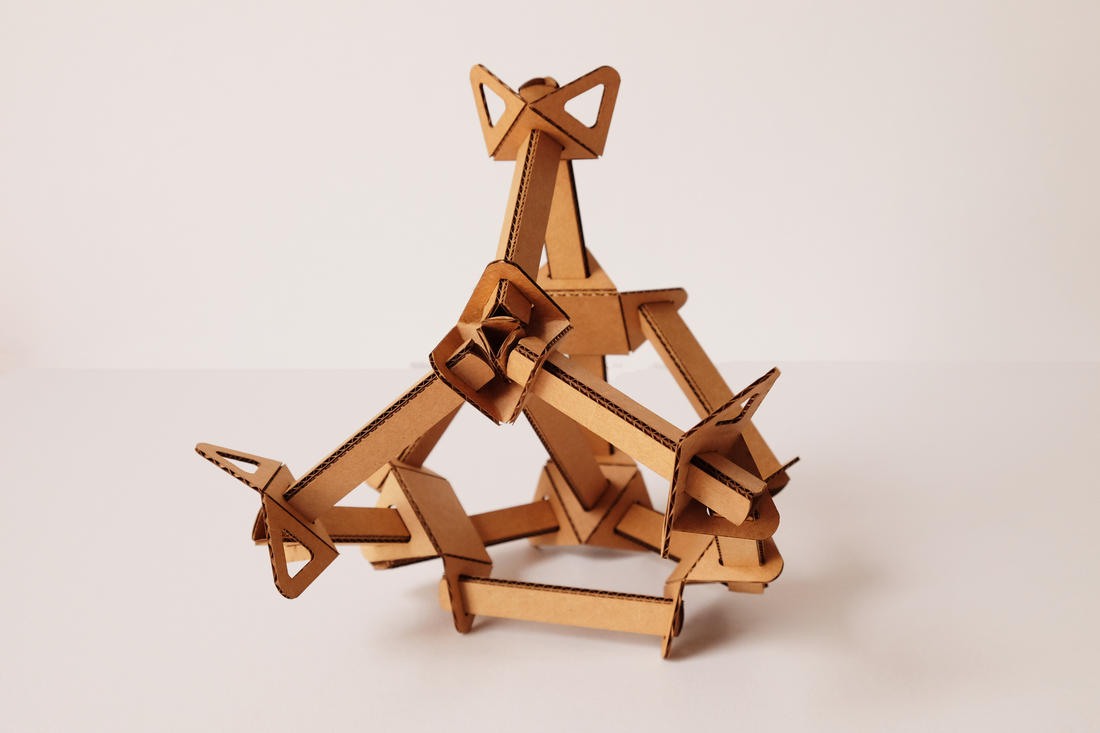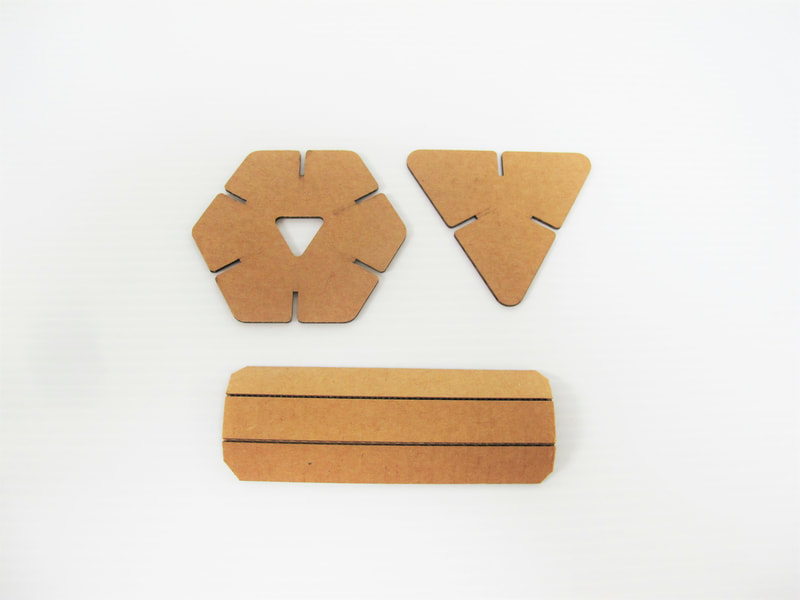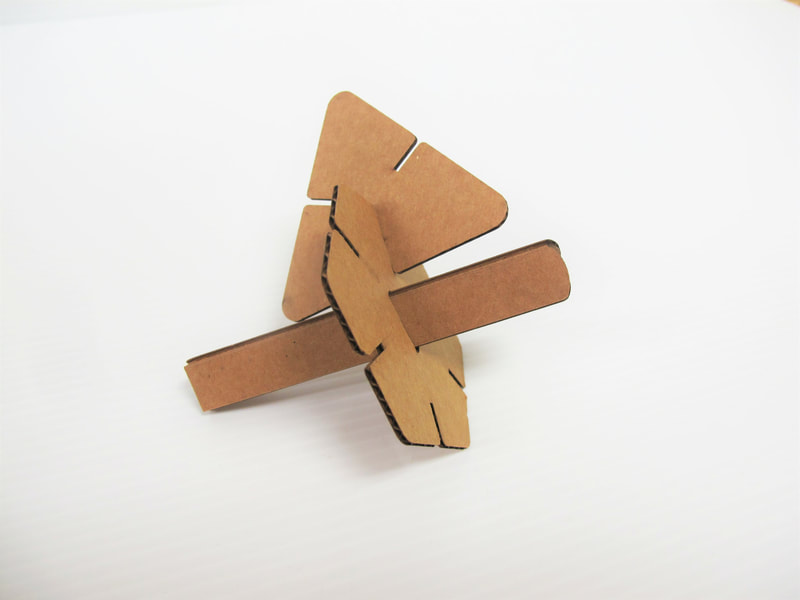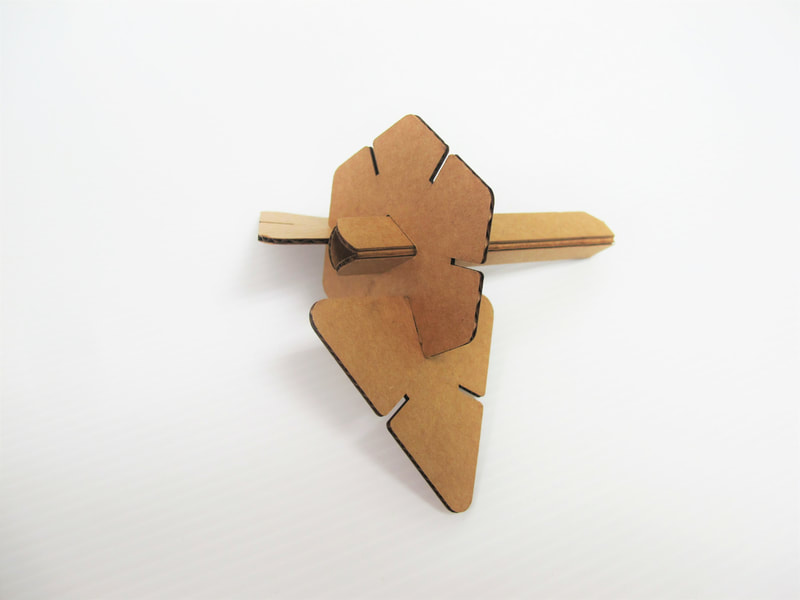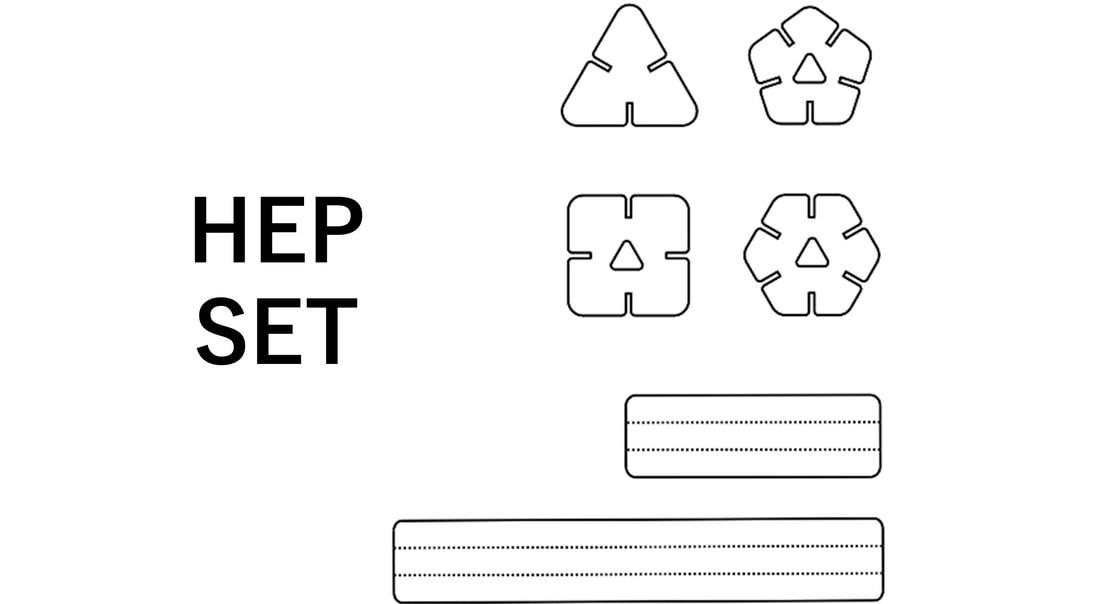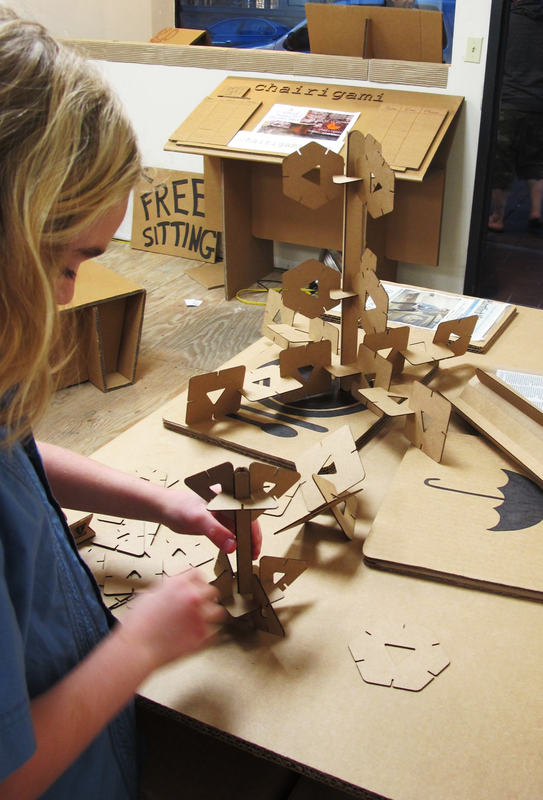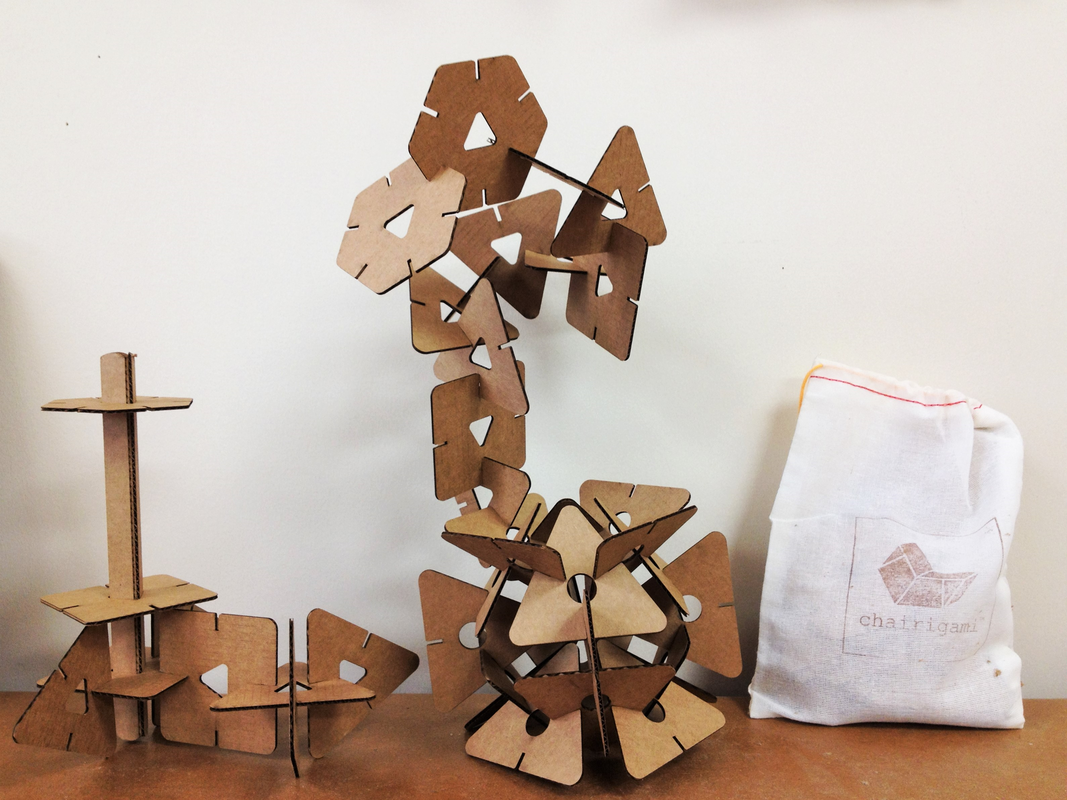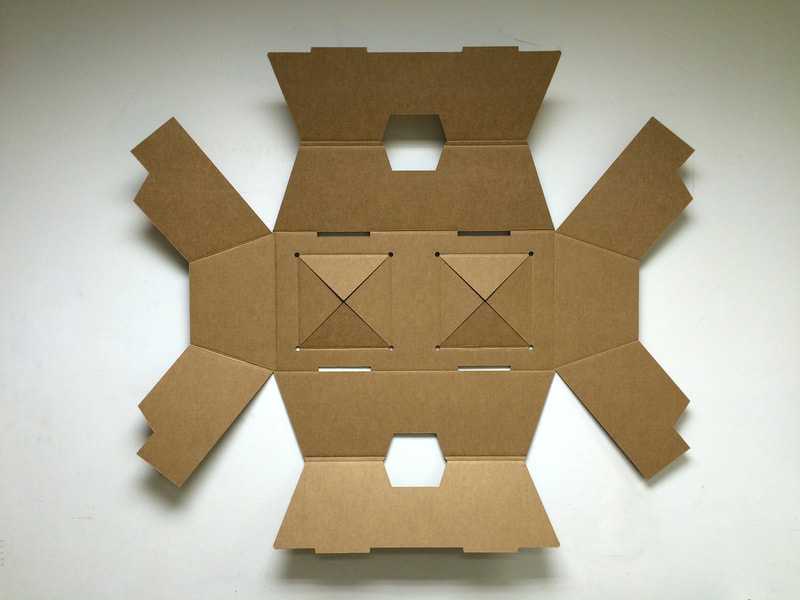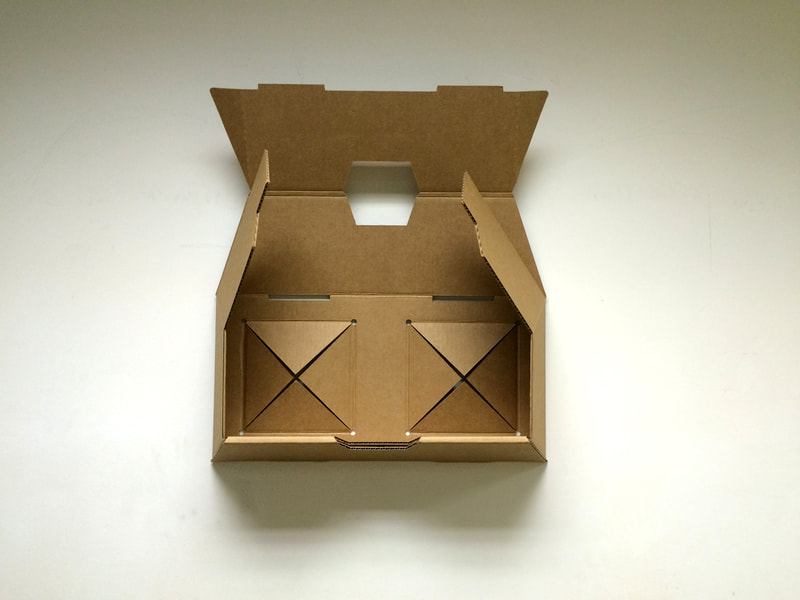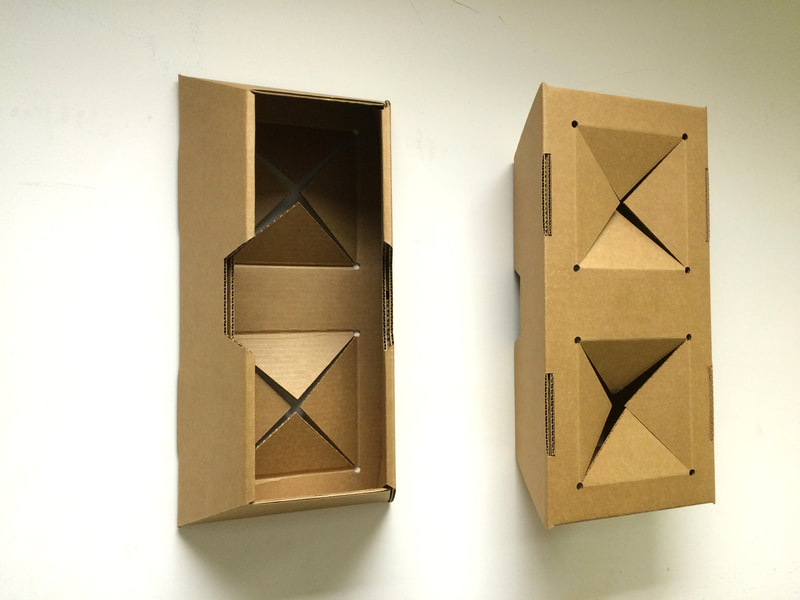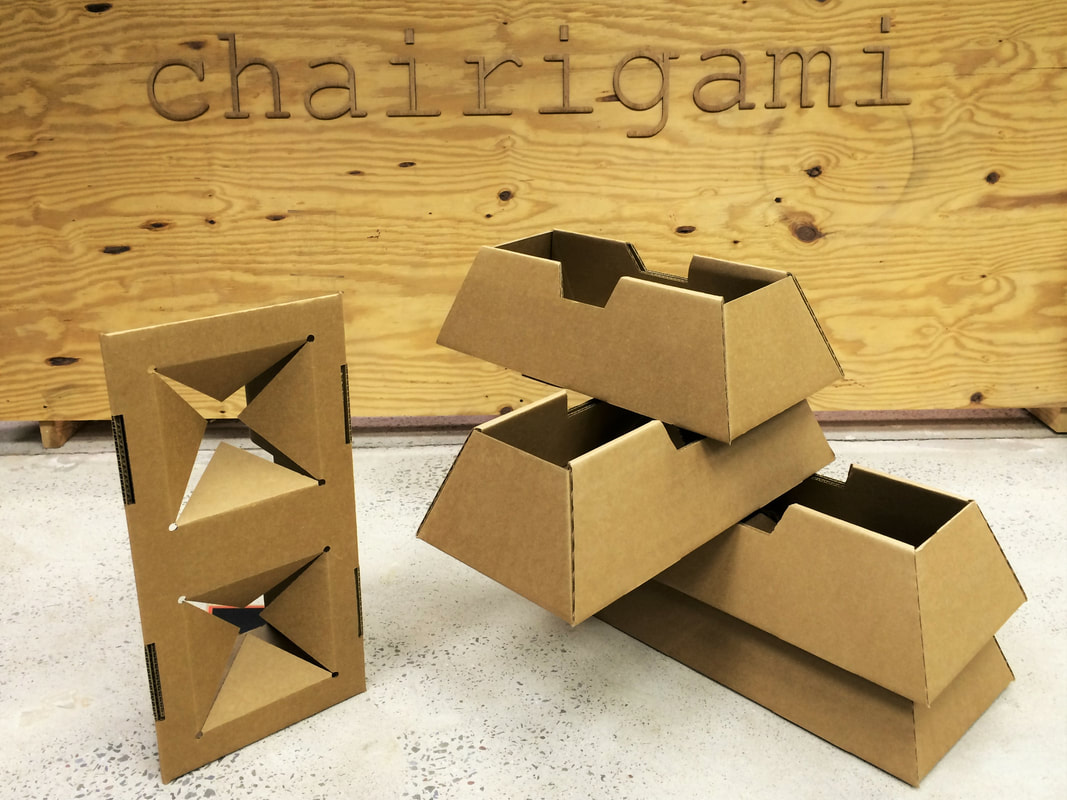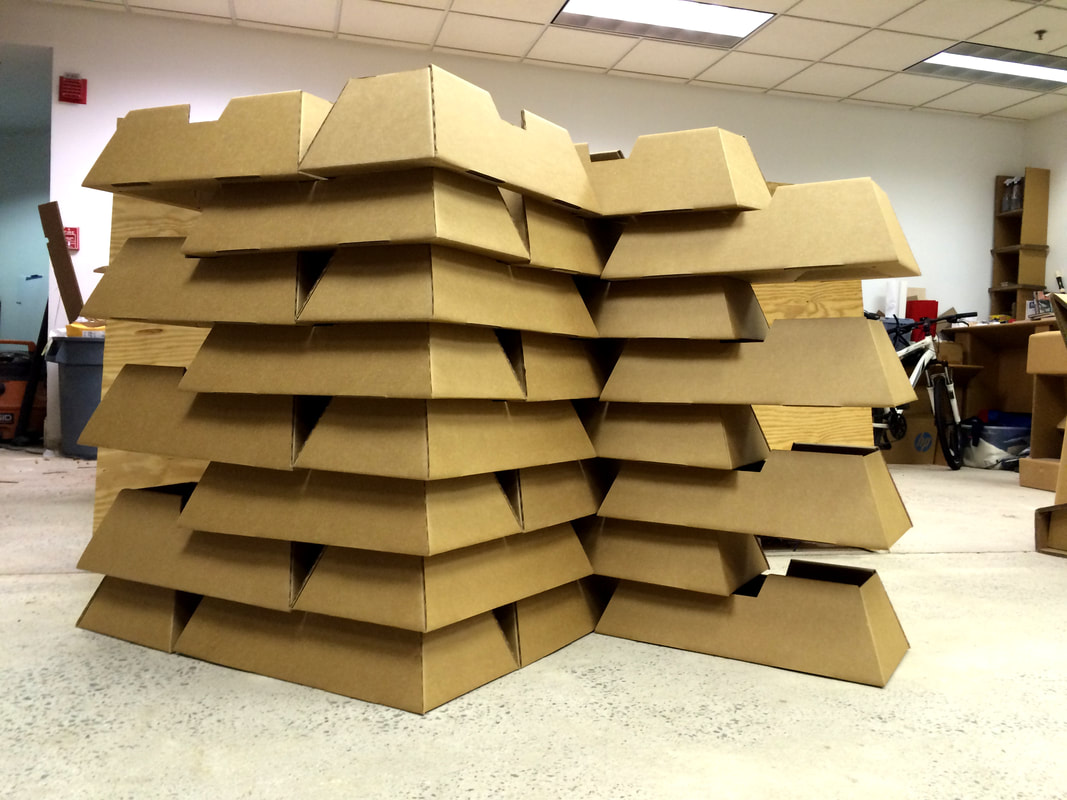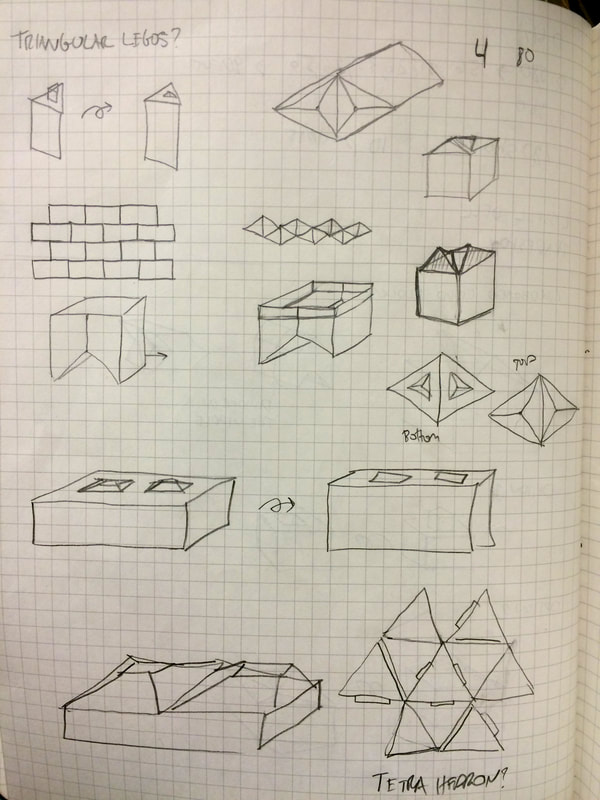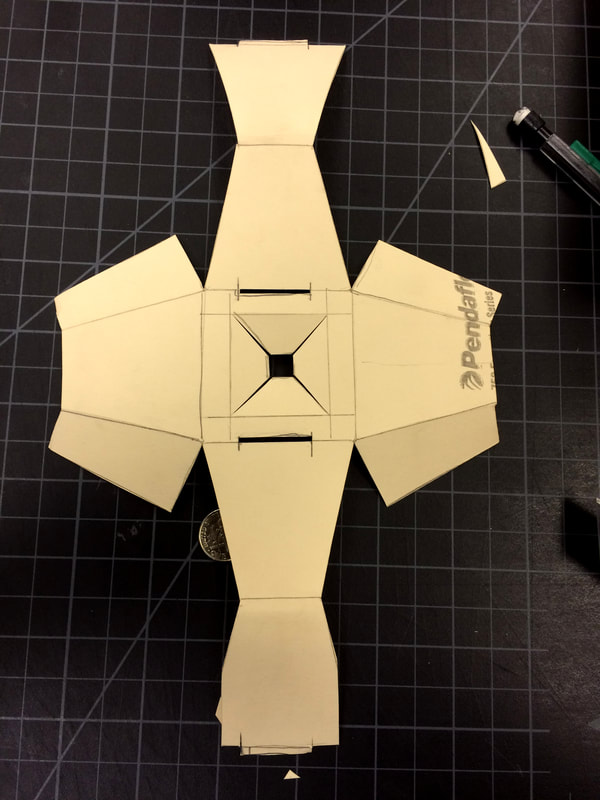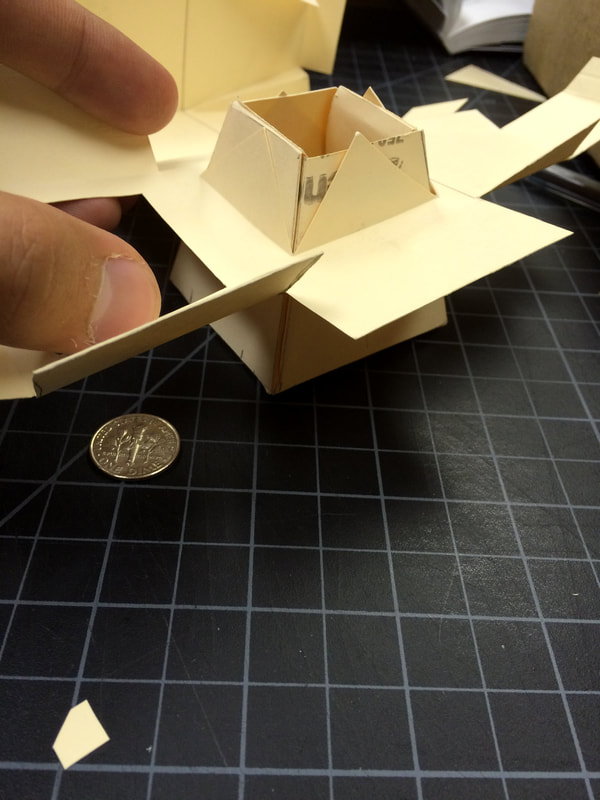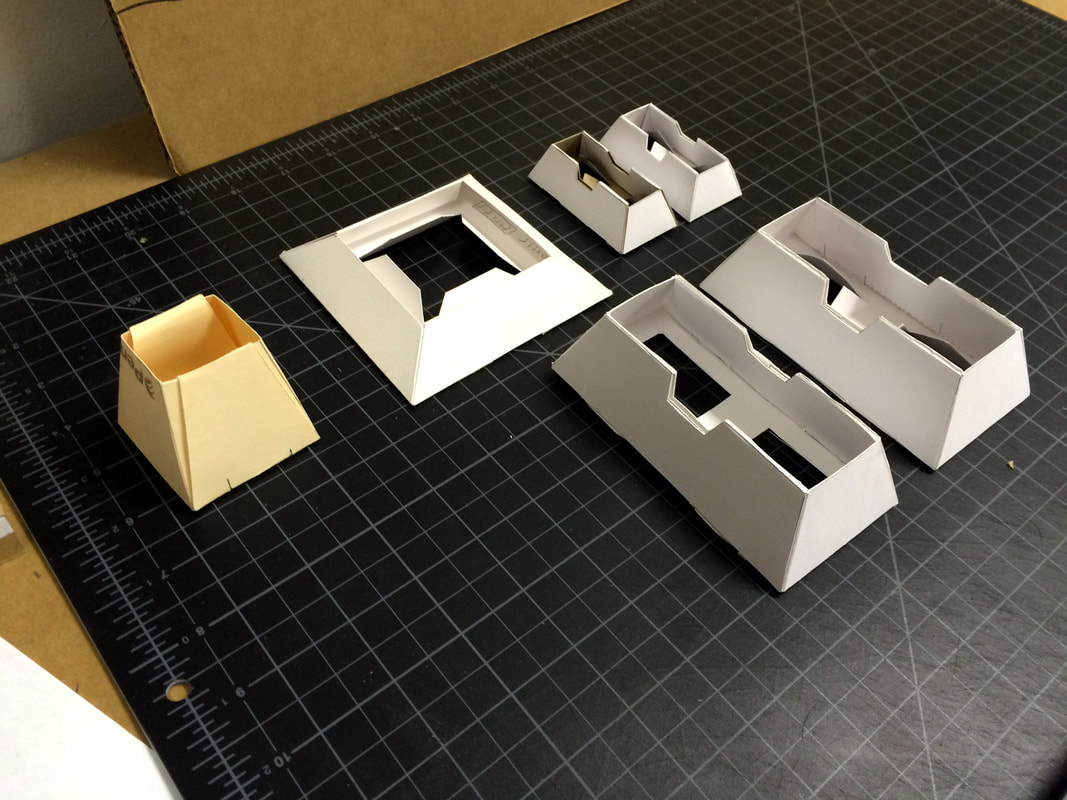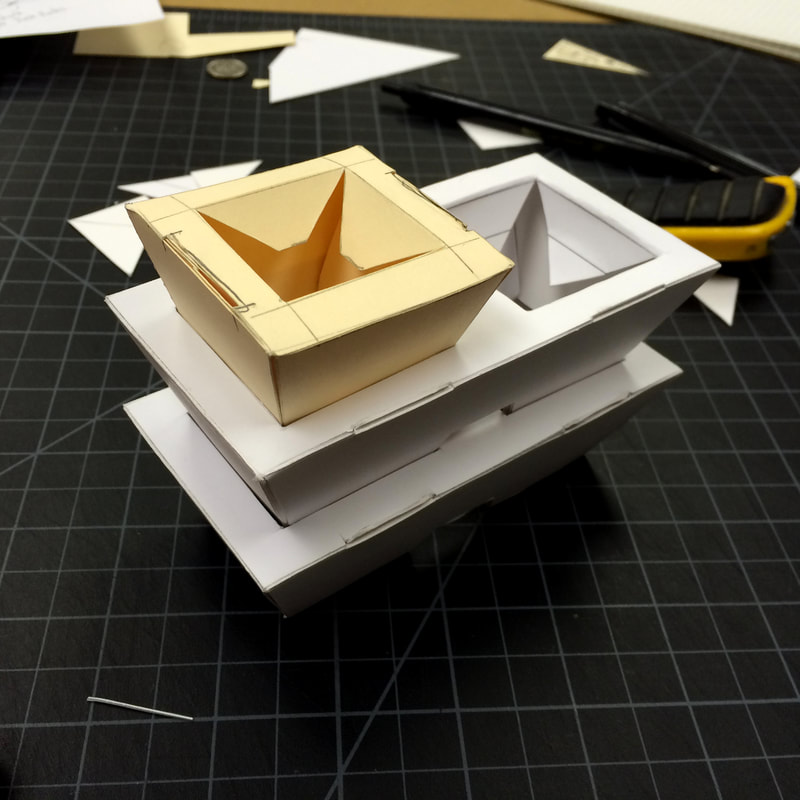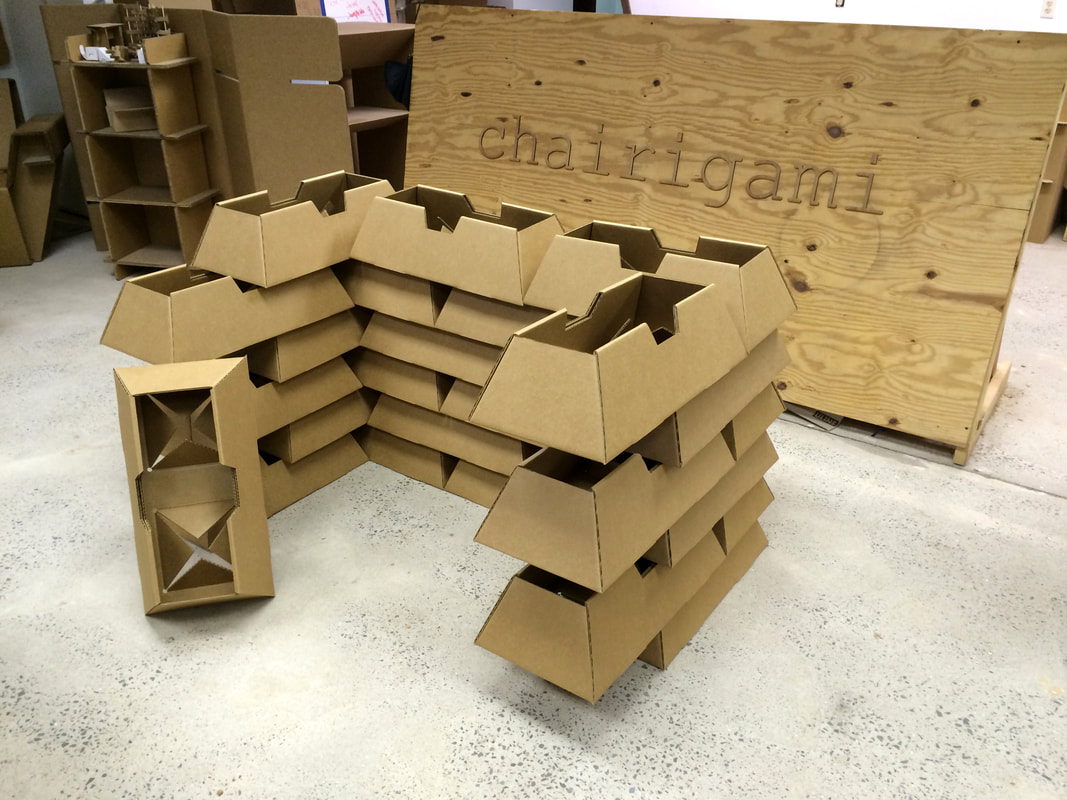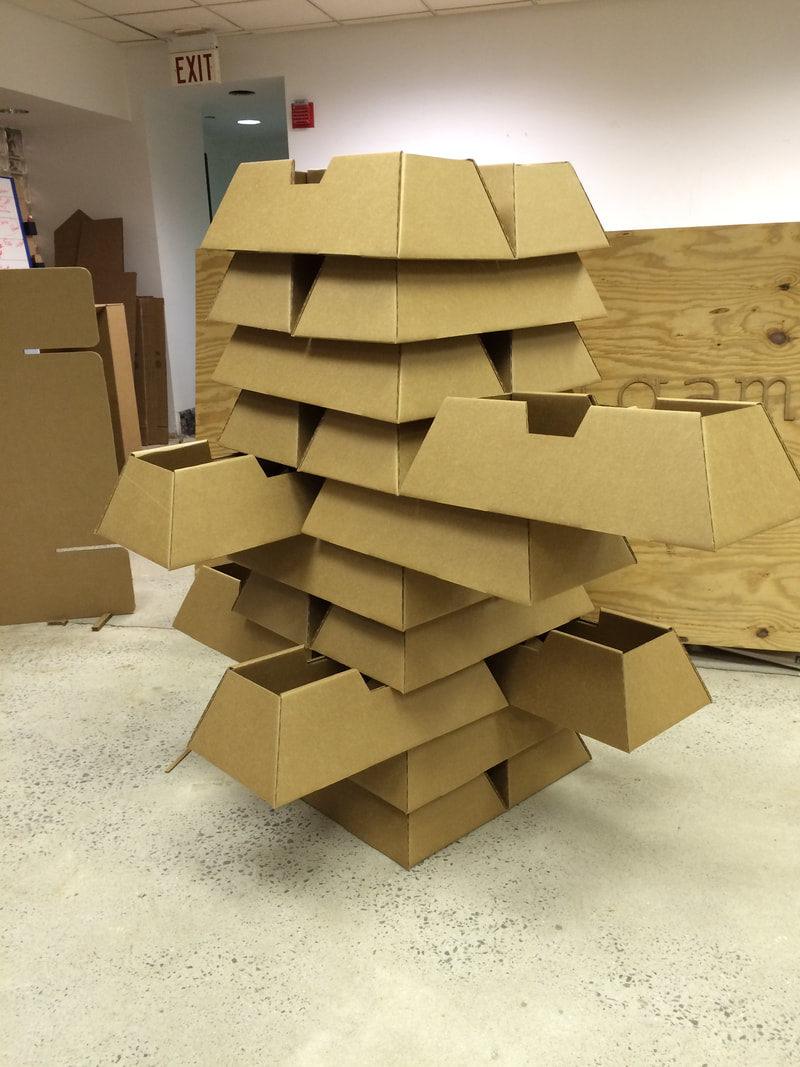The Need:
Children learn to express themselves through building and construction sets, gaining valuable experience in spatial relationships, problem solving, and geometry. Often these sets are prohibitively expensive for low income families depriving these children of an opportunity to develop modes of spatial creative expression. It was these same toys that allowed me to develop a love for engineering and making when I was a child. The Solution:
My goal was to be able to quickly and inexpensively manufacture modular cardboard construction sets from flat corrugated sheets. The toys could then ship flat-packed, saving space and cost, and be easily printed or customized with colors and patterns. Children would first fold modular units from die-cut punch outs and then, through creative expression, build a limitless range of structures and forms. Cardboard construction toys are wonderfully ephemeral. Lasting only as long as children need them, the corrugated units, rather than ending up in landfills and oceans as so many mass-produced plastic toys do, can be easily recycled after years of play. Trii Set:
The Hep Set:
Cardboard Bricks:
The Process:
Beginning with simple paper prototypes, I was inspired by the design of a common shoe box who's side panels fold inwards and lock into a base that secures a square frame. Knowing that the basic elements needed to easily nest, I simply rotated the sides of the box inwards creating a simple pyramid. From this pyramid form, I experimented with various pyramid heights and incline angles. The goal was to achieve structural rigidity when blocks interlocked with one another but also sufficient height when only a few blocks were nested.
Because a single square block can only stack in one dimension, I attempted to conjoin two square blocks into a larger rectangular block. By simply mirroring the flat pattern of the square block design and cutting additional notches for nesting, I found a way to create a rectangular pyramid. The new 2x1 block greatly expanded the building system to be able to create staggered horizontal structures allowing children to interlock blocks infinitely in 3-dimensions. With this elemental rectangular pyramid, children can creates strong fortresses or tall teetering towers, exploring structure and stability through play.
|
